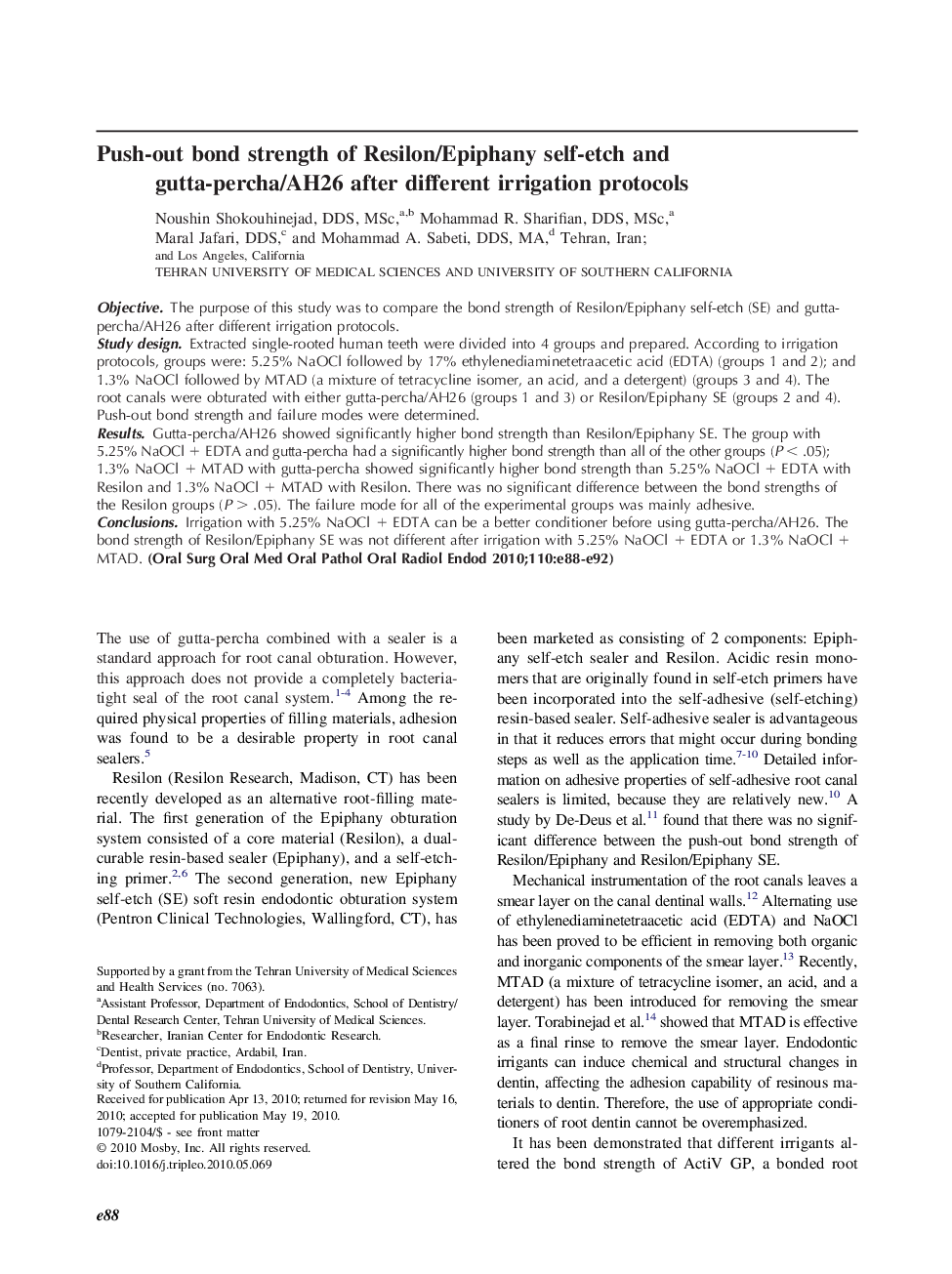| Article ID | Journal | Published Year | Pages | File Type |
|---|---|---|---|---|
| 3167478 | Oral Surgery, Oral Medicine, Oral Pathology, Oral Radiology, and Endodontology | 2010 | 5 Pages |
ObjectiveThe purpose of this study was to compare the bond strength of Resilon/Epiphany self-etch (SE) and gutta-percha/AH26 after different irrigation protocols.Study designExtracted single-rooted human teeth were divided into 4 groups and prepared. According to irrigation protocols, groups were: 5.25% NaOCl followed by 17% ethylenediaminetetraacetic acid (EDTA) (groups 1 and 2); and 1.3% NaOCl followed by MTAD (a mixture of tetracycline isomer, an acid, and a detergent) (groups 3 and 4). The root canals were obturated with either gutta-percha/AH26 (groups 1 and 3) or Resilon/Epiphany SE (groups 2 and 4). Push-out bond strength and failure modes were determined.ResultsGutta-percha/AH26 showed significantly higher bond strength than Resilon/Epiphany SE. The group with 5.25% NaOCl + EDTA and gutta-percha had a significantly higher bond strength than all of the other groups (P < .05); 1.3% NaOCl + MTAD with gutta-percha showed significantly higher bond strength than 5.25% NaOCl + EDTA with Resilon and 1.3% NaOCl + MTAD with Resilon. There was no significant difference between the bond strengths of the Resilon groups (P > .05). The failure mode for all of the experimental groups was mainly adhesive.ConclusionsIrrigation with 5.25% NaOCl + EDTA can be a better conditioner before using gutta-percha/AH26. The bond strength of Resilon/Epiphany SE was not different after irrigation with 5.25% NaOCl + EDTA or 1.3% NaOCl + MTAD.
